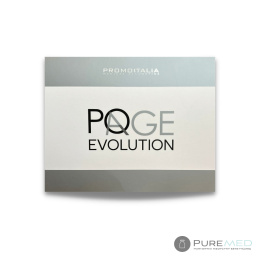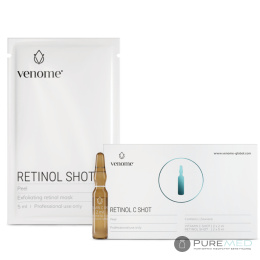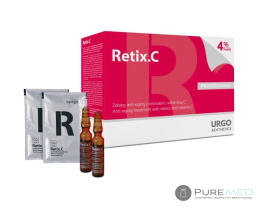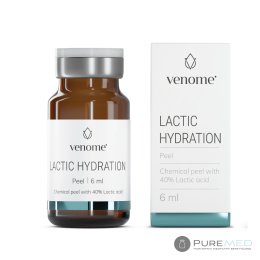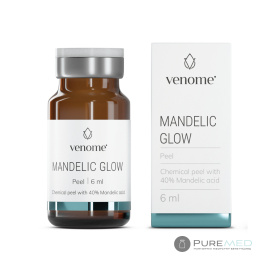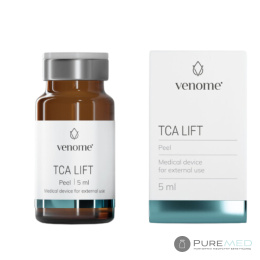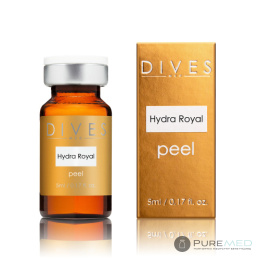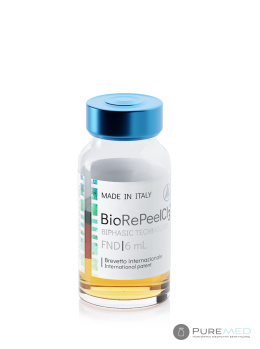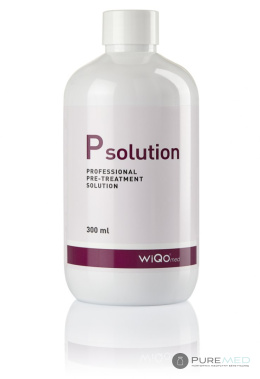- Categories
- Search
-
Proven and effective peels for your skin!
55.00
84.55
84.55
104.50
140.00
What is a chemical peel?
Chemical peeling, like any peeling, is based on exfoliation of dead skin. The peeling consists in applying special chemicals to the face, the selection of peeling is individual and depends on the needs of the patient's skin. The duration of action and the effect obtained after performing chemical peeling is very long and gives spectacular results. Performing such peeling supports many treatments in the field of aesthetic medicine.
Is chemical peeling applied only to the face?
No, chemical peeling is performed on the neck, cleavage, shoulders, back, wherever there are scars or stretch marks.
How often can you do it?
Chemical peeling, as a rule, is performed in autumn and winter, when there is no harsh sun. There are peels that can be performed in the summer, each case is individual, the aesthetic medicine doctor should choose the type of peeling for a specific case. The frequency of peeling also depends on the doctor, usually peeling is done once every 4 weeks.
Who can perform a chemical peel?
The peeling can be performed by a doctor in an aesthetic medicine office. There are also peels for home use, e.g. Hyalual peels.
How to perform a chemical peel?
The doctor knows the protocol for the chemical peeling treatment. Information on how to perform peeling can be found under each product in our store.
Can any type of skin have a chemical peel?
Yes, every skin will find a good scrub for itself. Chemical peels have perfectly structured compositions so as not to irritate sensitive skin, for example. Exemplary composition of Hyalual cleansing peeling for acne skin: 15% salicylic acid, 9% lactic acid, 4% citric acid, 2% mandelic acid. Aging skin: 13% lactic acid, 13% mandelic acid, 10% citric acid, 10% glycolic acid, 3% pyruvic acid, 2% kojic acid.
Is chemical peeling painful?
Peeling may sting slightly and cause discomfort, but it is only temporary. The perception of pain depends on the individual predispositions of the patient.
What are the indications for chemical peeling?
- Reduction of stretch marks,
- Reduction of atrophic scars,
- Loss of facial and body skin tension,
- Firming the skin of the neckline,
- Supportive in the treatment of melasma and skin hyperpigmentation - it is not photosensitizing, which means that it is safe for use in the summer,
- Discoloration on the face,
- Photoaging,
- Uneven skin tone and texture,
- The first signs of aging
- Dry and flaky skin.
Are there any contraindications for chemical peels?
- pregnancy, breastfeeding,
- skin allergies,
- active bacterial, fungal and viral changes,
- exposure of the skin to the sun,
- tendency to keloids,
- severe form of acne,
- oral vitamin A therapy,
- discontinuity of the epidermis.
Effects obtained after chemical peeling:
- Restores a healthy, radiant complexion,
- Corrects the early signs of aging (photoaging),
- Evens out the skin tone (lightens discoloration),
- Renews and smoothes the skin texture (gently smoothes the epidermis),
- Stimulates the synthesis of collagen and elastin,
- Provides deep skin hydration,
- Antioxidant and anti-inflammatory effects,
- Reduction of scars and stretch marks,
- Brightens the skin,
- Skin tension,
- Skin biorevitalization,
- Removal of excess sebum,
- Alignment of pores,
- Reducing the frequency of rashes, the so-called "porridges".
How to behave after chemical peeling?
Avoid exposing your skin to the sun after chemical peeling.
What does the care after chemical peeling look like?
After the treatment, regenerating skin care and day cream with SPF filter are recommended! Sometimes the skin may peel slightly after the treatment, it depends on the condition of the skin before the treatment. Many manufacturers who offer chemical peels also provide cosmeceuticals for use before and after the chemical peeling treatment. For example, WiQo provides a tonic, day cream for very dry, dry and combination skin and a smoothing fluid, thanks to this care we are able to extend the action and effects of PRX-T33 peeling.
An exemplary protocol for making Hyalual cleansing peeling for acne skin:
Initial skin preparation: Before applying the peeling, the skin should be cleaned and degreased using alcohol-based products (eg P-Solution). This will ensure even penetration of the exfoliating acids.
Peeling application: The peeling is best applied with a cosmetic fan brush, avoiding the eye area.
Completion of the treatment: After the specified application time (1-4 minutes), rinse the applied agent with water. Pre-neutralization is not required.
Chemical exfoliation depth: surface.
Application time: 1-4 minutes.
Series of treatments: 1-6 treatments at intervals of at least 7-14 days.
Frequency: 2 series a year.
![[{[item.product.name]}]]([{[item.product.photo.url]}] 125w)

